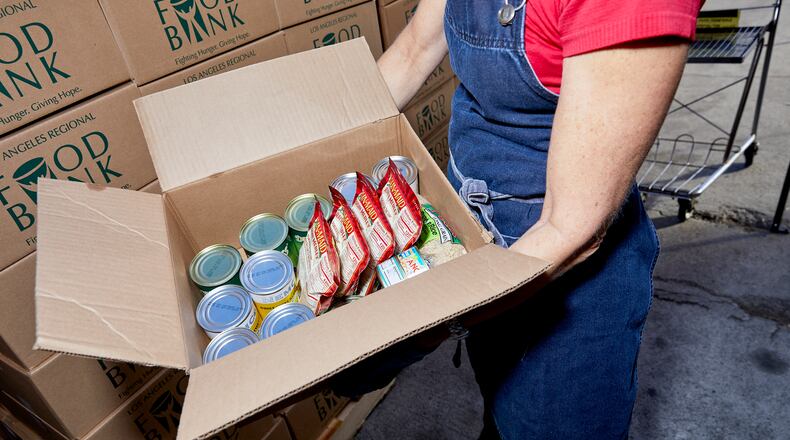For the past seven years, Frank Sheppard of the Feeding the Valley Food Bank has dedicated himself to serving the hungry in West and Southwest Georgia.
But due to the economic uncertainty, health challenges and supply chain disruptions of the COVID-19 pandemic, he has seen demand for his food bank’s services increase 53 percent in recent months.
“We’re distributing one and a half million pounds of food to the families we serve. That need has not lessened,” he said in an interview in April. “We’re doing our best to keep our inventory levels as high as possible to serve as many people as possible.”
A year-and-a-half into the pandemic, demand has remained high. The Georgia Food Bank Association reports the organization’s distribution of emergency food is 25 to 30 percent above pre-pandemic levels.
But while Georgia ranks among some of the most food-insecure states in our nation, food insecurity is by no means a purely local problem.
According to estimates by Feeding America, some 37 million Americans faced food insecurity before the COVID-19 pandemic began. Now that number has increased to 54 million.
For many of these Americans, food insecurity is not a familiar problem. During the early days of the pandemic, Feeding America estimated that 4 in 10 of the people visiting food banks were doing so for the very first time.
Alongside food banks, Congress is also doing its part to help those in greatest need.
The Supplemental Nutrition Assistance Program (SNAP) and the Women Infants and Children (WIC) nutrition assistance program help provide much-needed relief to the millions of Americans struggling to feed their families. In Georgia alone, household participation in the SNAP program increased over 20 percent in the first year of the pandemic, and although participation in the program is returning to its pre-pandemic level, as of June of this year, more Georgians still needed this critical assistance to put food on the table than before the pandemic.
The increase in SNAP participation last year in Georgia followed by the modest declines in 2021 illustrate that this program providing temporary nutrition assistance is working just as it is supposed to: supplementing household income for nutrition needs during periods of economic stress, until families can get back on their feet.
Data from the USDA’s Economic Research Service shows that SNAP benefits helped increase the percentage of food-secure households from 50.3 to 54.6 percent nationally, for households with income under 130% of the federal poverty level. But even as these programs provide a lifeline to those who need it most, they often fail to address the root causes that lead to food insecurity in the first place.
As chair of the House Appropriations Subcommittee on Agriculture, Rural Development, Food and Drug Administration, and Related Agencies, I have made it one of my top priorities to address these root causes, and to help bring the bounty of our nation’s farms to the communities where nutritious foods may not be readily available.
In Congress’ 2022 government funding bills, I worked to include greater investment in food assistance programs such as WIC and SNAP as well as provisions to focus on those facing food insecurity right here in Georgia.
Utilizing USDA programs, including the Healthy Food Financing Initiative and the Community Facilities program, I am working to secure funding to address food deserts in Middle and Southwest Georgia by establishing community gardens in selected rural locations and bringing retail food establishments to traditionally underserved areas. These programs would increase access to local fresh fruits and vegetables, engage community members and educate families on the importance of an active, healthy lifestyle.
In particular, I recently introduced legislation that would address the appalling prevalence of food insecurity among our nation’s military families. According to estimates, 14 percent of military families face food insecurity in the United States. My bipartisan legislation, the Equal Access to the Right Nutrition for Military Families or “EARN” Act, would remove existing barriers, and ensure that all eligible military service members are automatically enrolled to receive SNAP benefits should they need them.
As I continue to work for greater food assistance investments, I will continue looking for new ways to fight food insecurity at the source. Every American should be able to put food on the table for themselves and their loved ones.
U.S. Rep. Sanford D. Bishop Jr., D-Albany, represents Georgia’s 2nd Congressional District.
About the Author
Keep Reading
The Latest
Featured




